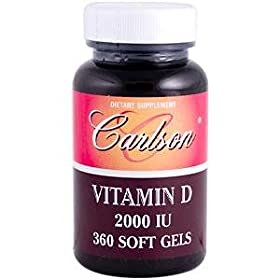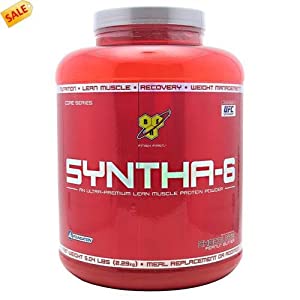Supplements for Baseball: Part Two

I talked a little bit about supplements for baseball in a previous thread on this blog. In that post, I said:
Supplements that I recommend are almost always going to fit the following categories:
- Are demonstrably better than consuming the source material (typically food)
- Are cost-effective and affordable for the average person
- Have a decent amount of scientific backing to them
The products I recommended were:
All of those supplements are still plenty fine and worthy of addition to your diet! Here’s just a few more that can help you along the way:
Vitamin D
Check out this great article by Chris Shugart on Vitamin D over at T-Nation – titled “D is for Doping.” In it, Shugart says that Vitamin D has positive effects on longevity, performance, and looking good naked. Sounds like an easy sell to me!
Here’s the excerpt on performance:
Studies on Vitamin D, sunlight, and performance go back for decades. Russian studies in the 1930’s showed that 100M dash times improved in irradiated athletes vs. non-irradiated athletes undergoing the same training (7.4% improvement vs. 1.4%).
German studies in the 1940’s showed that irradiation lead to a 13% improvement in performance on the bike ergometer vs. no improvement in the control group.
In the 1950’s researchers saw a “convincing effect” on athletic performance after treating athletes at the Sports College of Cologne. Findings were so convincing that they notified the Olympic Committee.
At one point, even school children were irradiated and given large doses of Vitamin D in 1952 Germany. Treated children showed dramatic increases in overall fitness and cardiovascular performance. UV radiation was also shown to improve reaction times by 17% in a 1956 study.
In the 1960s, a group of American college women were treated with a single dose of ultraviolet irradiation. The results: improvements in strength, speed, and endurance.
Other studies showed “distinct seasonal variation” in the trainability of musculature. Basically, athletes performed better and got stronger in the late summer due to their greater exposure to the sun and subsequent Vitamin D production.
Vitamin D has also been shown to act directly on muscle to increase protein synthesis. Deficient subjects administered Vitamin D showed improvement in muscle protein anabolism and an increase in muscle mass.
Improvements in neuromuscular functioning have also been seen. People with higher levels of Vitamin D generally have better reaction time and balance.
Even more good news: Vitamin D is extremely cheap. You can find it for about 4 cents per softgel from Amazon.com. We recommend Carlson’s Vitamin D softgels – 360 gels of 2000 IU will only run you about $15 and will ship free if you order just $25 worth of products.
Whey Protein – Revisited!
I know, I already talked about whey protein in my previous post. I’m including it now because I found a brand and style of whey protein that tastes really good without sacrificing nutritional quality or breaking the bank.
Syntha-6 Chocolate Peanut Butter protein mix is great. I mix it with milk in a shaker bottle 3-4 times/day for my protein supplementation, and it works out really well. The instructions say that water works too, but I haven’t had much luck – it tastes terrible to me.
Comment section
Add a Comment
You must be logged in to post a comment.

Trip Somers -
EXTRA INFO: Vitamin D is a fat soluble vitamin. That means it is found in animal fat and to a lesser extent in plant fat. Good food sources of Vitamin D include: fatty fish (catfish, salmon, tuna, among others), whole eggs (cholesterol in the yolk), and mushrooms.
Vitamin D, however, is synthesized by the body. This means that with ample sunlight (irradiation of the skin by ultraviolet light), Vitamin D is not a necessary supplement. Of course, with sunlight being something that can easily be overdone, it’s hard to say how much is necessary or too much.
Since sunblock helps stop UV rays from penetrating the skin, it follows that sunblock will hamper Vitamin D synthesis.
According to the NIH, the tolerable upper level intake for Vitamin D is still only 2,000 IU – the exact dosage of the recommended pills. If you take those, it might be best to stay out of the sun. As of 1997, some studies had shown that the tolerable upper level intake might be as high as 10,000 IU, but NIH has not changed its recommendation.
Also of note, the NIH recommends at least 200 IU per day (this number assumes no sunlight-based synthesis). Obviously, a higher dose would be recommended for enhanced performance.
Kyle -
A fair amount of research shows that dosing around 5000 IU is worthwhile:
https://www.vitamindcouncil.org/researchRequirements.shtml
(not the most unbiased website, but it’s just a list of research papers)
Dr. Richard Cohen of Bioletics recommends 50 ng/ml concentration, which in average adults is a dose of 4000 IU/day without considering sunlight exposure.
I personally dose 6000-8000 IU/day with no ill effects.
Mike -
Kyle, just to be clear, you are talking about ADDITIONAL vitamin D, not something that’s already a part of your multi-vitamin, right?
my multi contains 400 IU per serving, but for additional protein synthesis i would need to take in the 2000-4000 IU dose, correct?
Kyle -
Additional, yes.
As always, your mileage may vary, and yadada legal disclaimer here about exceeding the NIH’s recommendations.